Preservation Activities at the Yamanashi Office of Yamagata Casio
It is known that the rare plants on the grounds of the Yamanashi Office of Yamagata Casio are species suited to that environment, as they were accustomed to the grasslands there, which were part of rural life up until around the year 1900. Generally speaking, however, species suited to this environment are being lost today, as artificial management and human involvement is no longer practiced to ensure usability of the grasslands. However, the management of green space (grass cutting) on the grounds of the Yamanashi Office happens to be similar to the artificial grassland management of past times. As a result, these species have been preserved.
From this perspective, in addition to the plants Lespedeza tomentosa (which is listed as an endangered species by Japan’s Ministry of the Environment and by Kanagawa Prefecture), and Thesium chinense (which is the food plant for the insect Canthophorus niveimarginatus), Potentilla chinesis, Siberian Lespedeza juncea, and Lespedeza virgata have been identified as relatively rare grass species for protection based on the advice of experts.
Management plan for preservation and improvement of grassland biodiversity (in Japanese)
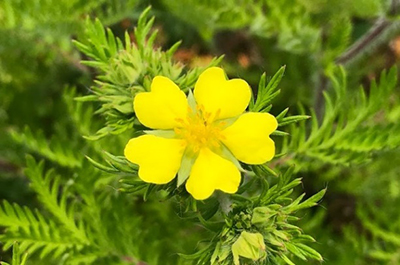
Chinese cinquefoil
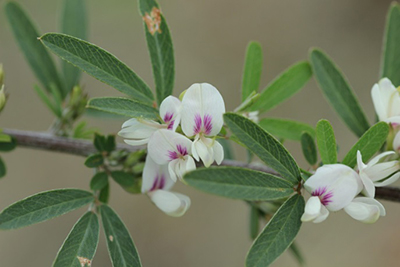
Siberian Lespedez
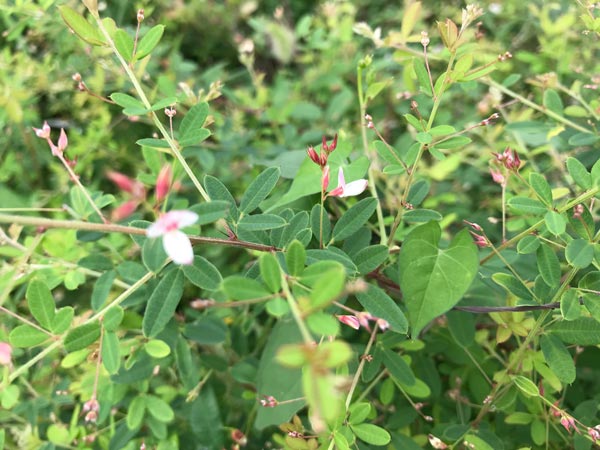
Lespedeza virgata
In light of the rare species growing in the grounds of the Yamanashi Office of Yamagata Casio, the protection team of employee volunteers is continuing the management of green space (grass cutting) that has not changed significantly from the past as a specific protection measure. The protection team is also working to raise seedlings of rare species from seeds collected in the fall and to propagate individuals.
As a result, it has been possible to increase the number of individuals and decrease the risk of loss. On the other hand, Desmodium paniculatum, which is known to threaten the habitat of rare species, has invaded the grounds unnoticed over the past few years, grown into large plants, and begun to disperse a large number of seeds.
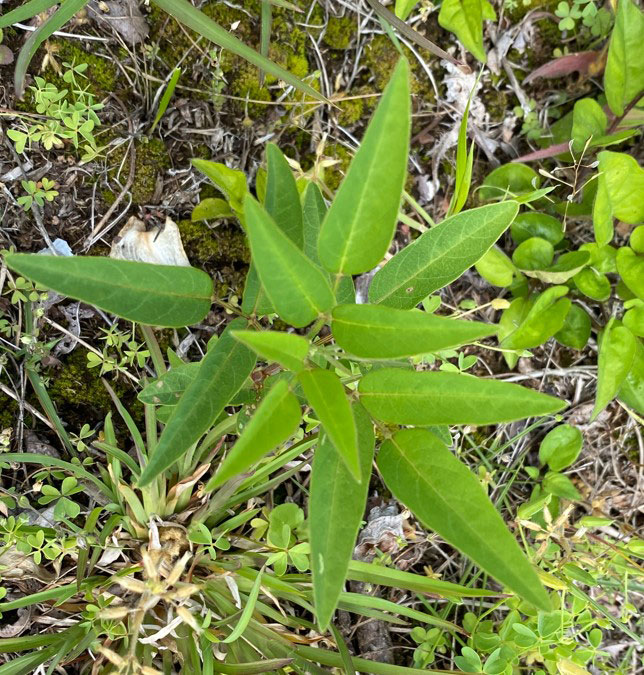
Desmodium paniculatum
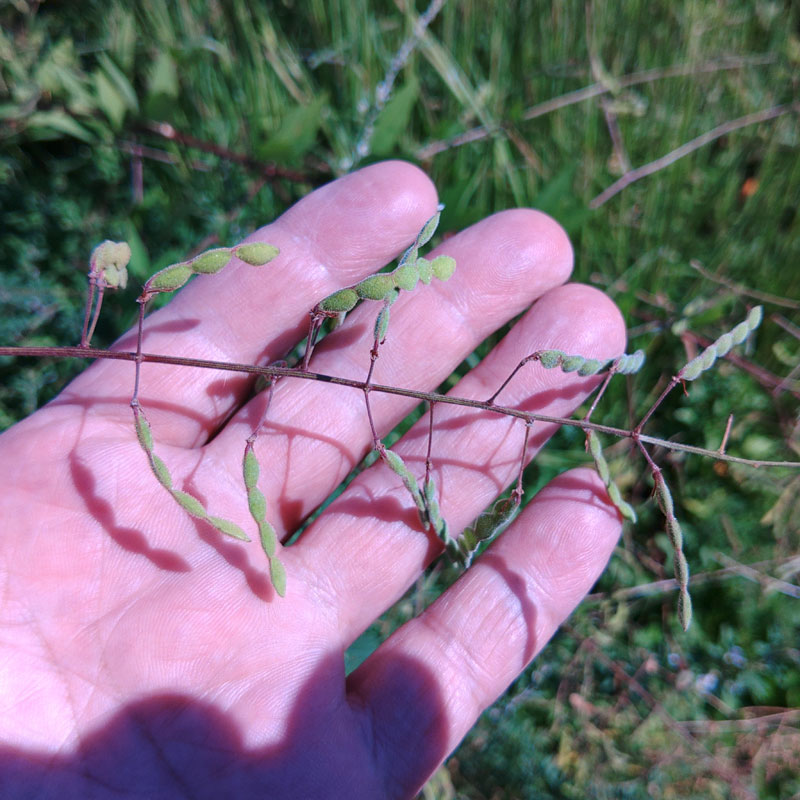
Increase in seeds
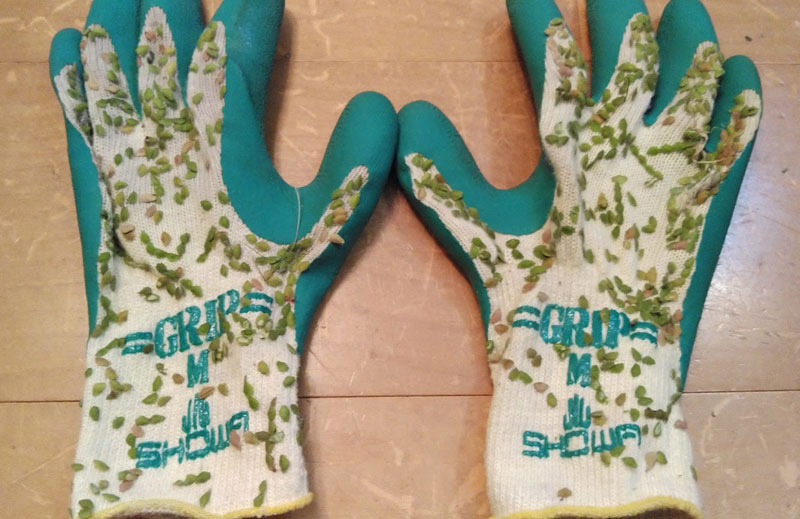
Seeds easily stick to clothes
Desmodium paniculatum, from the southeast of North America and known as a naturalized plant, has been included on the Invasive Alien Species (IAS) List from Japan’s Ministry of the Environment and the Ministry Agriculture, Forestry and Fisheries, being known as difficult to eradicate once introduced, due to its strong rhizomes, high ability to disperse seeds because of its sticky fruit, and tendency to grow rapidly near rivers. Left unchecked, it may endanger the habitat of rare plants, yet the protection team aims to avoid using chemicals such as herbicides too readily. Therefore, in 2022, an attempt was made to remove the rhizomes using a small pickaxe, as a way of eliminating the plant without using herbicide. However, digging out the rhizomes of a single plant was a lot of work, and, because the work was done while there were many seeds on the plant, a large number of seeds stuck to clothing, and the only choice was to give up and cut off the parts of the plants above the ground.
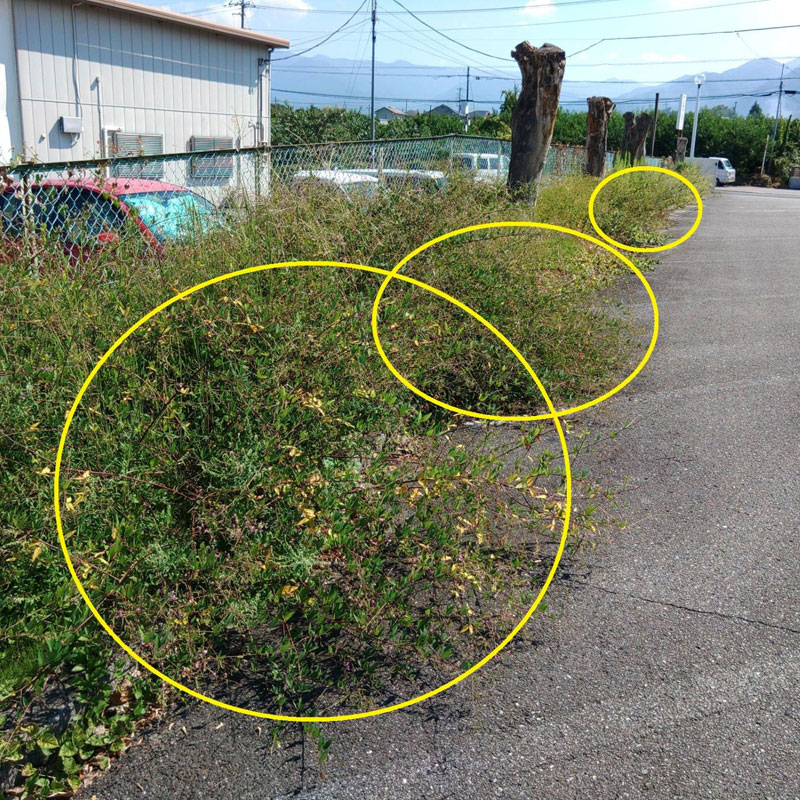
Desmodium paniculatum on the company property
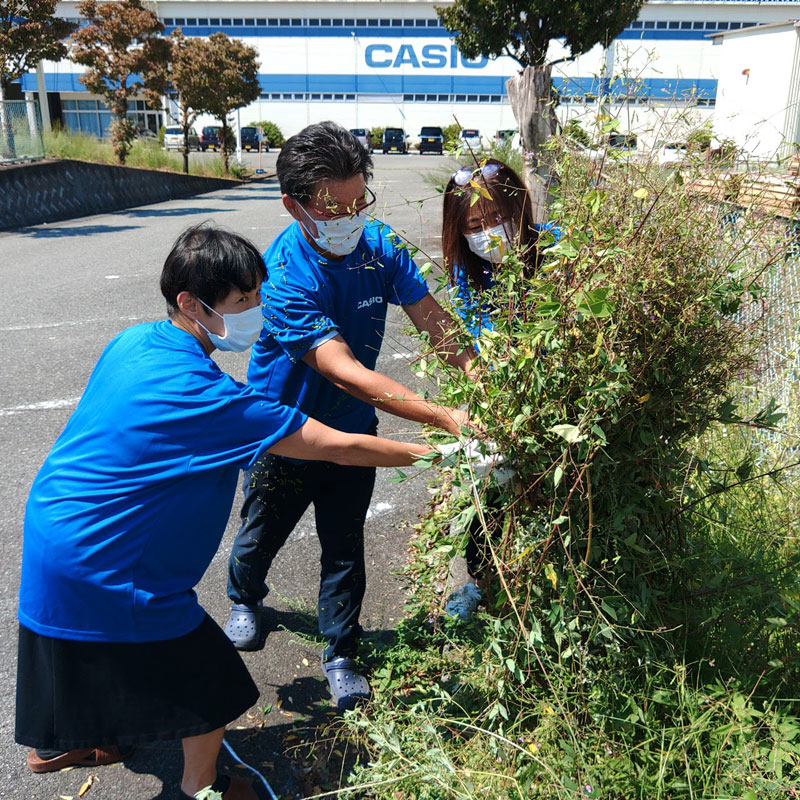
Tying with string with many seeds on the plant

Attempting to eliminate the rhizomes using a small pickaxe
Therefore, in 2023, employee volunteers collected information to enable them to identify Desmodium paniculatum from the characteristics of its leaves before the formation of seeds and pinpoint the location of individuals at an early stage. Following that, a hoe (like those used for planting etc., in Casio Forest), with good digging capacity, was tried, and the rhizomes were removed relatively easily.
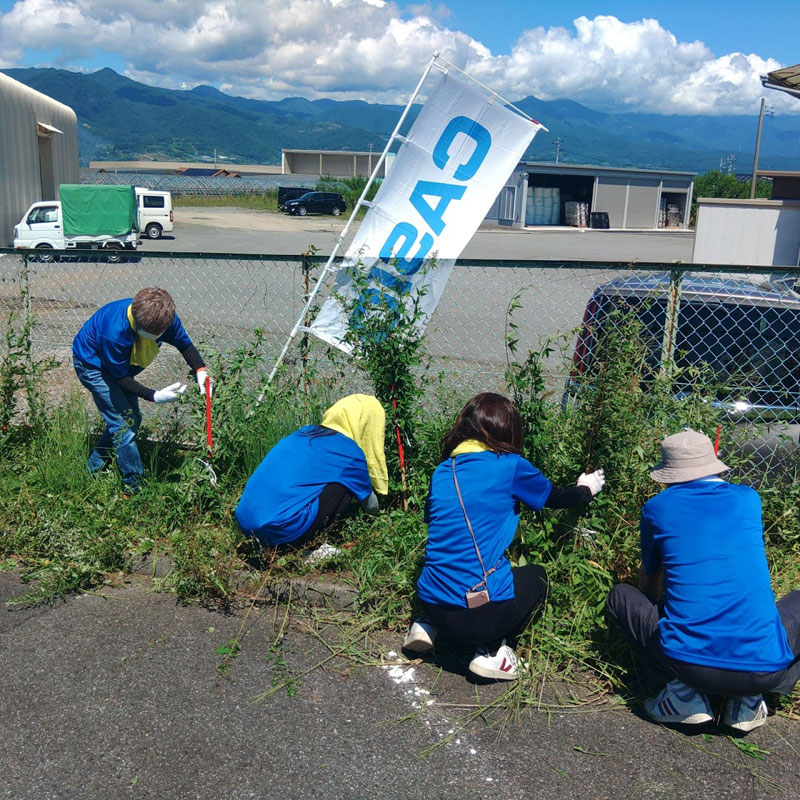
Tying the spreading limbs with string
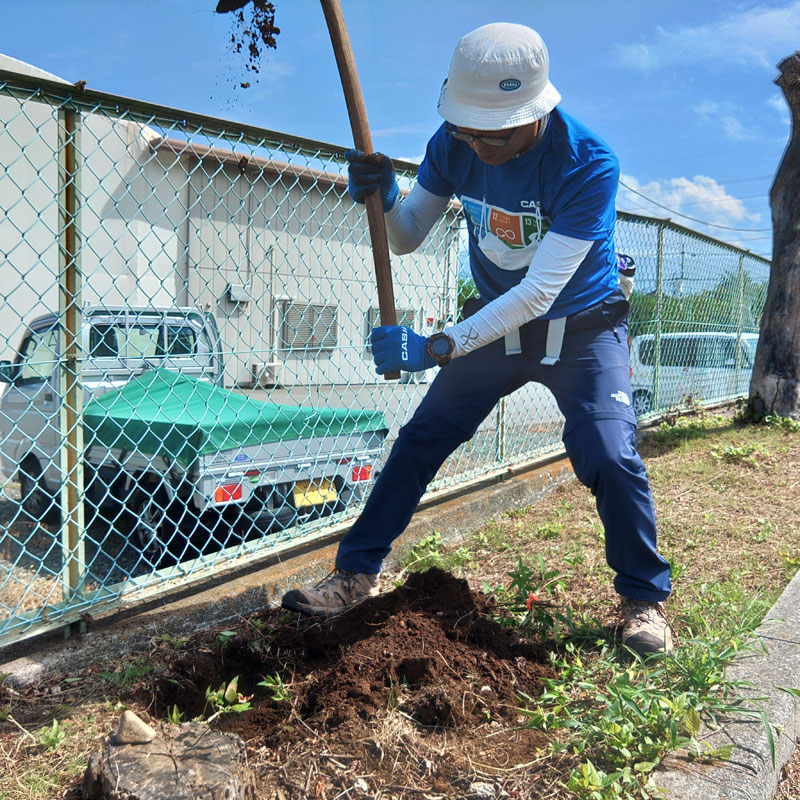
Digging up the rhizomes with a hoe
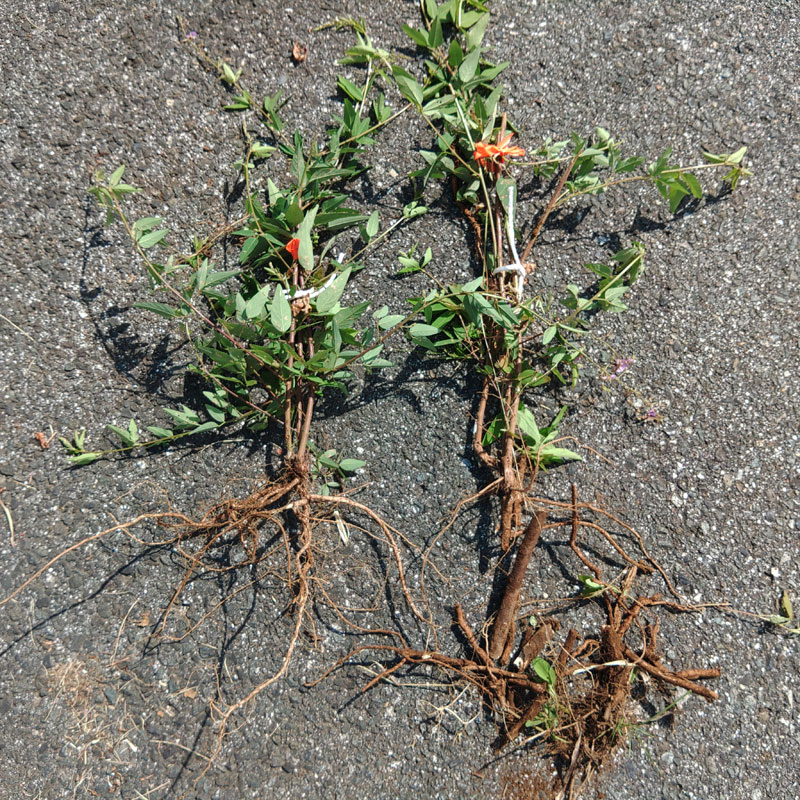
Desmodium paniculatum rhizomes that were dug up
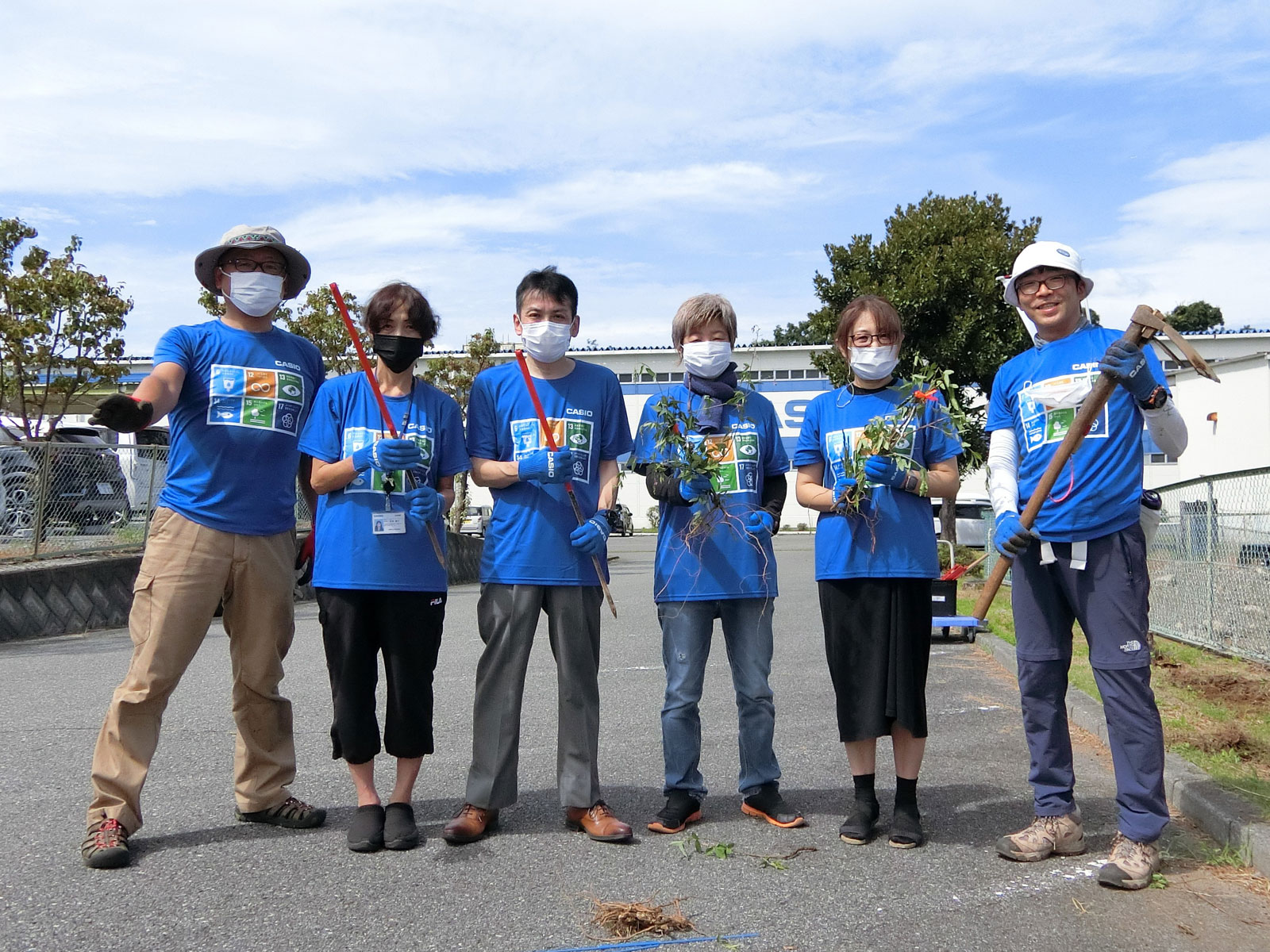
Team members from the Yamanashi Office of Yamagata Casio who took part in digging up Desmodium paniculatum rhizomes
There may still be Desmodium paniculatum rhizomes in the ground, and the aim is to completely eradicate them from the grounds by continuing to take measures next year and beyond, with the hope of protecting the growing environment for rare plants.